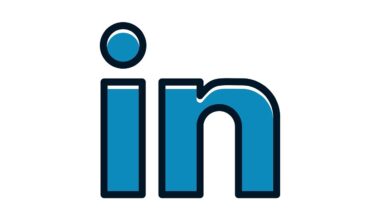Building an Effective Social Listening Dashboard
In today’s digital age, businesses recognize the importance of social listening as a crucial component of their marketing strategy. An effective social listening dashboard enables companies not only to monitor their brand’s online presence but also to gauge customer feedback and sentiment. By actively observing conversations around their products and services on various social media platforms, organizations can gain invaluable insights into consumer preferences and behaviors. When designing a social listening dashboard, organizations should prioritize the metrics that align closely with their strategic objectives. This process involves determining key performance indicators (KPIs) that matter most to their goals. Common KPIs include engagement rates, sentiment analysis, and trending topics related to the brand. Furthermore, brands can segment their listening efforts based on demographics or geographical locations, allowing for tailored responses. Technology plays a vital role in facilitating these insights. Platforms like Hootsuite, Sprout Social, or Brandwatch offer customizable dashboards that enable users to track conversations in real-time. Ultimately, the goal of an effective social listening dashboard is to leverage data to inform decisions, drive engagement strategies, and enhance overall customer satisfaction.
Another crucial aspect of building an effective social listening dashboard is integrating multiple data sources. This means going beyond basic social media metrics to include mentions across forums, blogs, and news sites. By consolidating information from various platforms, businesses can create a comprehensive view of brand perception and consumer sentiment. Collecting and analyzing data from different sources enhances the dashboard’s reliability and offers a broader spectrum of insights. A well-structured dashboard should visualize relevant data clearly, using graphs and charts that provide quick overviews of performance metrics. Visual tools like pie charts, line graphs, and heat maps aid in understanding trends at a glance. Additionally, including filters for date ranges and specific keywords enables users to customize their analysis to focus on high-impact data points. It’s essential for teams to collaborate effectively when utilizing the dashboard. Regular meetings can be held to discuss findings and brainstorm actions based on insights derived from the data. By maintaining an open dialogue, organizations can swiftly adapt their strategies based on feedback and insights from their audience.
Utilizing Customer Feedback
Utilizing customer feedback effectively is another core aspect for brands seeking actionable insights from their social listening dashboards. By understanding customers’ comments, reviews, and opinions, organizations can better address pain points and improve their offerings. Regularly monitoring feedback allows companies to respond promptly to any arising issues, demonstrating to consumers that their voices are heard. Furthermore, integrating sentiment analysis tools into the social listening dashboard can help quantify feelings expressed in comments. This can highlight the overall perception of a brand. Using natural language processing (NLP) algorithms, organizations can categorize feedback into positive, negative, or neutral sentiments, unlocking a new layer of understanding. Marketers can leverage this information to refine their messaging and product development processes. However, simply collecting data is not enough; brands must act on the insights gathered. Implementing changes or adjustments based on feedback can cultivate stronger relationships with customers. After modifications, organizations should revisit the dashboard to analyze any shifts in consumer sentiment or satisfaction, measuring the effectiveness of their improvements and strategies implemented.
Furthermore, collaboration within teams fosters idea generation and creativity, leading to enriched results. Each department can utilize the dashboard in different contexts, from customer support addressing concerns to marketing tailoring campaigns that resonate with their audience. This multi-departmental approach promotes a unified understanding of customer sentiment, values, and preferences. Being proactive in addressing feedback can help brands mitigate potential crises and maintain a positive image in the public eye. As the social media landscape evolves, the ability to remain agile and responsive will be vital for long-term success. Moreover, maintaining an updated social listening dashboard continually ensures teams are aware of changing trends and emerging conversations. Regular updates enhance relevancy and accuracy, allowing organizations to stay ahead of competitors. It is also beneficial to establish a routine for reviewing the dashboard’s performance. Analytical reviews should include discussions about the strategies that have been successful and those that have not performed as anticipated. This ongoing process of evaluation and refinement will help brands remain aligned with their audience and respond effectively to their needs.
Market Trends and Competitor Analysis
Integrating market trends and competitor analysis into the social listening dashboard offers brands a strategic advantage. By tracking not just their metrics but also those of their competitors, organizations can identify industry best practices and discover gaps in the market. This competitive insight is invaluable for positioning products or services effectively. Tracking what is working for competitors can serve as a benchmark, aiding brands in setting realistic goals and expectations for their performance. Utilizing features such as benchmarking functions within social listening tools can illustrate where a brand stands in relation to its peers. Additionally, understanding market trends can inform product development and marketing strategies. Observing shifts in consumer choices can guide brands to tailor their offerings to meet emerging demands. Combining social metrics with external data, such as industry reports or economic trends, creates a robust analytical environment that supports strategic decision-making. Organizations can react more swiftly to changing market dynamics, ensuring sustained competitive advantage while also maintaining relevance among their target audience. Knowledge of competitors allows brands to initiate campaigns that demonstrate thought leadership and innovation.
Finally, to ensure the social listening dashboard remains effective over time, continuous training of team members is essential. Keeping staff updated on the latest tools and technologies used in social listening fosters greater analytical skills. Employees should have opportunities to enroll in workshops or training sessions designed for strategic dashboard utilization. Regular training sessions help identify any new features added to the tools and ensure everyone is harnessing their full potential. Customizing the dashboard based on user feedback can also prove valuable. Regular updates based on experiences and suggestions can improve usability and reduce the learning curve for new team members. Encouraging team members to share insights about what metrics provide the most value can refine how the dashboard is structured. Additionally, fostering an environment of learning and adaptation empowers teams to innovate continually. As social media evolves, so do consumer preferences, calling for the need to adjust approaches continually. An agile, well-maintained social listening dashboard ultimately can ensure organizations stay competitive in the rapidly changing digital landscape.
Overall, a well-designed social listening dashboard is critical for successful social media campaign planning. Through effective data management, brands can capture the voice of the customer and leverage insights to drive their strategies. Aligning dashboard metrics with the brand’s overarching goals allows teams to focus on achieving business objectives. This focus not only fosters collaboration across departments but also ensures consistent messaging and engagement with audiences. As the landscape of social media continues to shift, being adaptable and responsive will be key to retaining customer loyalty and satisfaction. This adaptability can ultimately serve as a significant differentiator in a crowded marketplace, enhancing brand reputation and loyalty. Engaging constantly with customers through listening strategies will provide the groundwork for creating experiences that resonate with audiences. Investing time and resources into building an effective social listening dashboard pays dividends in the long run. It positions a brand to respond promptly to consumer needs while leveraging insights for future growth and success. Knowing how to interpret and act on the collected data is paramount for driving a successful social media strategy that elevates brand reputation and fosters meaningful connections.
Additionally, organizations must recognize the evolving nature of social media platforms and adapt their listening strategies accordingly. With each platform catering to different demographics and user behaviors, a one-size-fits-all approach to social listening may not yield optimal results. By customizing strategies to fit the unique attributes of various channels, brands can enhance their effectiveness in engaging with potential customers. Furthermore, companies should consider testing new tools and features within social listening platforms to enrich data analysis capabilities. This experimentation can uncover new insights that were previously overlooked and thus refine social listening efforts. Continual investment in technology and resources dedicated to social listening showcases a commitment to consumer engagement and satisfaction. Brands that actively prioritize this area of their marketing strategy will be better positioned to identify trends and respond proactively to audience feedback. In conclusion, staying on top of social listening requires consistent evaluation, strategy adaptation, and a strong understanding of current market dynamics. Organizations equipped with effective social listening dashboards can harness the power of collected data to inform strategy and driving long-term success.


